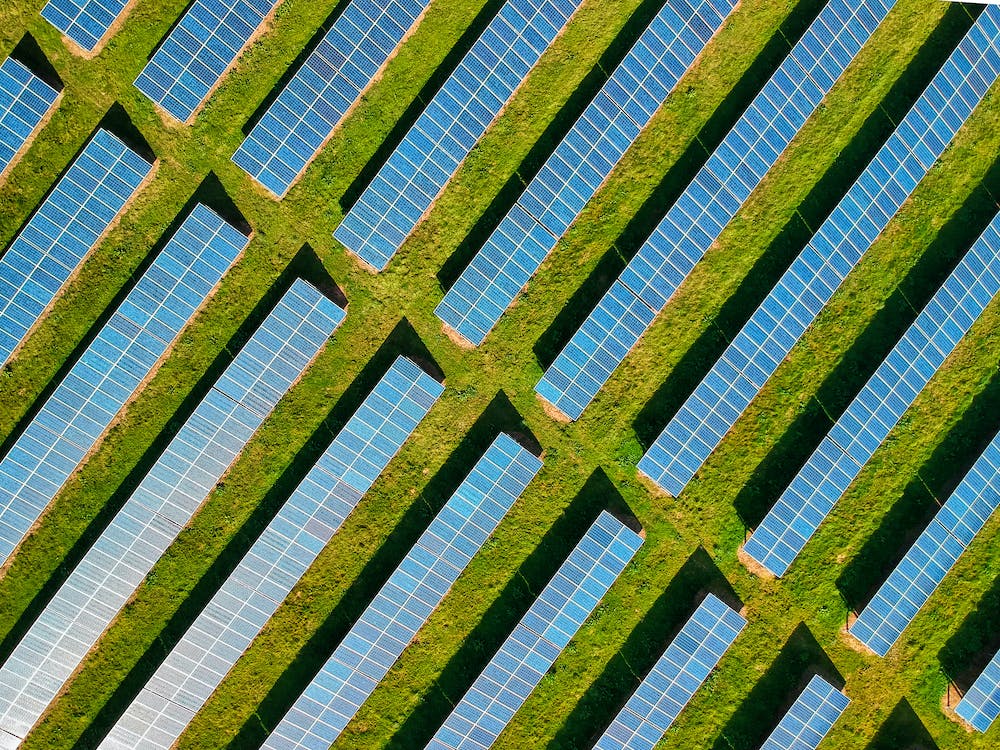BLOGS
The Demand For Green Commodities In Real Estate
The most sustainable way is to not make things. The second most sustainable way is to make something very useful, to solve a problem that hasn’t been solved.
– Designer Thomas Sigsgaard
So much more resources have been used by the people in the last 50 years than in all of human history combined.
9 out of 10 people around the world are exposed to air pollution.
500 billion to 1 trillion plastic bags are dumped into landfills annually, and it can take up to a thousand years for a plastic bag to decompose.
With the world continuing being in danger because of the pollution, it is crucial for the people to take care of the planet to live in.
One of the greatest things the people around the world can do is to live sustainably through switching to green products, and investing in green commodities.
What Are Green Commodities?
Products, services, and practices that promote economic growth while protecting natural resources and future generations are commonly referred to as “green” or “sustainable.”
Green products are those that have less of a negative impact on the planet or on human health compared to their conventional counterparts.
It is important to note that nearly no item will ever be completely “green,” as the development of any product will inevitably have some influence on the environment.
As we have seen, it all boils down to weighing the pros and cons of various approaches.

Consider the following characteristics of green products and services, which will help you weigh the pros and cons and arrive at a more informed decision.
Products that are green are energy-efficient, long-lasting, and typically require little to no maintenance to function properly.
A green product is free of chemicals that deplete the ozone layer, toxic compounds, and don’t produce any byproducts that are toxic.
It is also frequently fabricated using recycled materials or content, as well as sources that are renewable and sustainable.
Most green products are procured from makers or resources locally.
It is either capable of being broken down naturally or being easily repurposed, either in whole or in part.
A green product is one that is created with consideration for the environment in mind at every stage of its existence, from production to disposal.
Waste minimization and resource efficiency improvement are two of the most common ways in which “green” products can be recognized.
What are the benefits of buying Green Commodities?
1.) Green products tend to endure longer.
The short lifespan of non-sustainable products is one of its major drawbacks. However, this is not the case with eco-friendly goods.
The majority of them have a lifespan that is at least double the average.
Energy-saving light bulbs are one such product.
These light bulbs have a life expectancy that is three to twenty-five times that of conventional light bulbs.
The use of there energy-saving light bulbs will make your life easier.
Sustainable manufacturing practices can help increase the durability of clothing.
In addition, hemp apparel is more long-lasting than conventional cotton clothes.
T-shirts made from standard cotton tend to survive for around a decade. You could believe that is fine, but it pales in contrast to hemp.
The lifespan of a hemp t-shirt may be twice as long as that of a cotton one.
Eco-friendly items, such as toothbrushes and bamboo straws are durable and long-lasting.

2.) Green products are good for your health.
Benefits both physical and mental health because eco-friendly items are not created with potentially dangerous chemicals or components.
For instance, large windows are typically placed in green buildings in order to maximize the benefits of natural lighting and ventilation.
It is good for your mind and helps you relax.
3.) Green products help the planet.
Green products reduces demands on limited resources.
There is less of a risk of overusing fossil fuels and other resources when people use eco-friendly items, and more power may be generated using renewable energy sources.
Green products help to minimize your impact on the environment by doing things like switching to renewable energy sources or investing in energy-saving appliances.
Since you are buying things that last longer and can be reused and recycled, you are lessening the quantity of trash that ends up in landfills.
4.) Green products reduce your energy consumption and utility costs.
The durability of eco-friendly products is maybe their greatest advantage.
In addition, eco-friendly goods are expected to reduce resource depletion and power consumption.
In the use of energy-saving light bulbs, you are able to save money because you do not have to replace the bulb as soon, plus you get to keep the lights on for longer.
Solar panels, for instance, can convert solar radiation into usable electricity. They can be substituted for fossil fuels in power plants.
In addition, solar panels do not necessitate the use of nonrenewable resources like oil, coil, or gas, therefore they are also environmentally friendly.
Greener products tend to hold up better over time. In addition to lowering utility costs, these items also reduce environmental impact.
Solar speakers, for instance, can play continuously for 10 hours after a single charge.
What are green commodities?
Traditionally, the term “commodity” has been used to refer to a product that can be substituted for another of the same type.
Natural gas, steel, cement, and gold are just some examples of commodities.
Competition in this market is based primarily on cost due to consumers’ inability to tell one product apart from another.

Green commodities are becoming a fresh category of commodities on the road to a zero-waste future.
These commodities are identical to their non-green counterparts in terms of chemical composition, but are made using clean and, ultimately, environment neutral processes.
The production of green steel, for instance, results in negligible emissions because it makes use of carbon capture and storage, hydrogen, or recycled materials.
According to a research conducted by McKinsey Sustainability, there is a possibility that the demand for some environmentally friendly materials would surpass the available supply in major markets.
It is possible that the rate at which demand grows will outpace the rate at which the sector can decarbonize its asset base or construct production capacity with low emissions.
It is possible that supply and demand are practically in equilibrium, with the majority of supply deriving from secondary aluminum.
In the not-too-distant future, suppliers will utilize electric crackers or biofeed stocks; but, in the immediate future, they will electrify processes.
Depending on the circumstances, the demand will be higher than supply by anywhere from 5% to 19%.
Companies that have taken steps to reduce emissions have been shown to see gains in profitability, employee morale, and consumer loyalty.
Rather than focusing on trade-offs, a holistic strategy prioritizes complementary acts that strengthen one another to produce a positive, long-term effect.
Brittany Corporation has always prioritized long-term sustainability in all of its projects.
As one of the largest developers of luxury properties in the Philippines, Brittany aspires to create the finest homes and communities that will motivate every family to pursue a sustainable lifestyle.
If you are moving towards sustainability, you should definitely consider a Brittany home since the corporation offers the best green communities.
With the help and support of everyone, we can make a positive change for the planet’s living beings.
A better quality of life for humans, animals, and the earth as a whole is within reach via concerted efforts to create a sustainable population.
Suggested Read: Sustainable Design That Won’t Ruin Your Home’s Charm
Suggested Read: How Sustainability Concerns Influence Property Buyers
Suggested Read: Why Sustainability Is Important In Real Estate
Suggested Read: Metro Manila Cost Of Living Remains Stable
Suggested Read: Sustainability In The Real Estate















